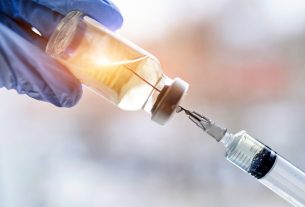[ad_1]
Sushi, sashimi and other dishes based on raw fish that are hugely popular in Israel and around the world are generally safe to eat – but the bacteria that grow in them and are resistant to antibiotics pose a health hazard to people with weak immune systems including the elderly, those with chronic diseases, children and pregnant women.
Dr. Hyejeong Lee, who recently completed her PhD at the of biotechnology and food science department at the Norwegian University of Science and Technology (NTNU) investigated different types of Aeromonas bacteria in seafood products that do not undergo enough processing. Without heat treatment or the use of other antibacterial methods, the risk of bacteria levels becoming high increases sharply.
“The goal was to gain more knowledge about Aeromonas in this type of seafood – both the bacteria’s role in the deterioration of the product and in causing disease. Furthermore, we wanted to see if raw seafood can spread antibiotic-resistant bacteria,” said Lee.
She published her findings in the journal Frontiers in Microbiology under the title “Whole genome sequence analysis of Aeromonas spp. isolated from ready-to-eat seafood: antimicrobial resistance and virulence factors.”
Listeria monocytogenes are probably the best-known pathogenic bacteria related to raw or mildly processed seafood. However, the prevalence of Aeromonas in these kinds of products has worried scientists for some time. Lee checked fish products that are readily available on the Norwegian market for Aeromonas bacteria. “The results show that the mild processing these fish products receive does not guarantee that the growth of Aeromonas bacteria will be inhibited.” In other words, the processing of sushi, sashimi and cold-smoked fish is ineffective in preventing bacterial growth. But that’s not all. “The majority of these Aeromonas variants are possibly pathogenic and there are often several different risk factors associated with them,” Lee warned.
Lee stressed that the risk of getting sick from Aeromonas is admittedly very small, especially for healthy people. “Aeromonas is often ignored when we talk about food safety. But I think my research highlights that the food industry needs to pay more attention to these bacteria,” she added.
Strict regulation
Strict regulation by the authorities is probably the most important means of tackling the problem of antibiotic-resistant bacteria, the team noted. However, people can make a difference by choosing raw produce from countries that only use small amounts of antibiotics in aquaculture.
Preventative methods include systematically monitoring and taking samples in production environments, finding good monitoring indicators, implementing measures when multidrug-resistant bacteria are detected in groups of animals, vaccination and education, and awareness-raising work in food production around the world.
Aeromonas bacteria in the sea frequently exchange genetic material with other bacteria. This is especially unfortunate if this genetic material comes from bacteria that are resistant to antibiotics. “Some strains of Aeromonas can also spread antibiotic resistance from one type of bacteria to another. Eating seafood infected by resistant bacteria is a likely way these bacteria can spread from marine animals and environments to humans,” Lee concluded.
“To combat the spread of antibiotic-resistant bacteria, it’s important that we adopt a broad approach that looks at animal and human health, food production and the environment together in order to achieve better public health,” said Prof. Anita Nordeng Jakobsen at NTNU’s biotechnology and food science department. “Microorganisms are transferred between animals and humans via food and the environment, so reduced use of antibiotics alone is not enough to prevent bacterial proliferation.”
[ad_2]
Source link



